This Article was published in the Martinez News-Gazette on 7/01/2017 Aaron Rice's Headstone - July 4th, 2017 Aaron Rice's Headstone - July 4th, 2017 On July 31, 1906, Aaron Rice (an African American who was one of the first freed slaves to vote in Napa, California) was interred in the Contra Costa County’s Potter’s Field of Alhambra Cemetery, where they buried the impoverished, unclaimed, and discriminated. His gravesite borders the more prominent section of the cemetery where William and Louisa Rice (his former slave owners) are also buried. Our surprise in finding Aaron’s headstone (being one of only four to have survived) and the uncovering of his remarkable story has resulted in his becoming very special to us. However, it has left us with a couple of questions, which we have so far been unable to answer. 1) Who paid for his headstone? 2) What does the phrase “The Faithful” refer too? For the enslaved American, census data did not include them until after slavery was abolished. Therefore, to tell Aaron’s story we had to rely on information from authored books, various organizations, a written oral account, along with whatever official documents could be found, in order to piece together Aaron’s life prior to 1860.  Wikipedia - Caswell County, NC Wikipedia - Caswell County, NC We found through documentation that Aaron Rice was born, January 1819 in Caswell, County, North Carolina to Robert and Dilcy Rice. Aaron and his family were the property of Archibald and Sally Jane Rice, who owned a cotton farm.  Historic Site - Somerset Place, NC Historic Site - Somerset Place, NC In the early 1800s in North Carolina, enslaved Americans would work on small to medium sized farms, unlike their counterparts on the larger plantations found throughout the rest of the South. As a result, they were responsible for a larger variety of jobs including carpentry, fieldwork, and domestic duties. They were also afforded more interaction with other enslaved Americans on other farms. Perhaps it was his desire to want a plantation (or his land wearing out) that caused Archibald Rice to eventually relocate from North Carolina to Missouri. 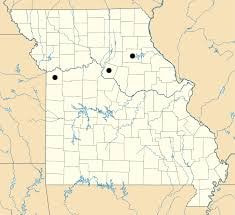 Map of Missouri Counties with Rice's Homes marked in Black Map of Missouri Counties with Rice's Homes marked in Black From the Friends of the Rice-Tremonti Home Association’s (Association) website, “Archibald and Sally Rice moved from North Carolina to Missouri in the 1820s, settling finally in Jackson County by the 1830s.” According to William’s oral history account published in History of Contra Costa County by W. J. Slocum & Co., he states, “…until October, 1826. In that Fall, Mr. Rice, Senior, disposed of his property in North Carolina and emigrated to Howard County, Missouri, where he rented a farm for one year. ... In the Spring of 1828 he accompanied the family to Rolls (now Monroe) county, Missouri, where they settled in the midst of the forest, …In the Fall of 1831 their lands in Monroe county were sold, and the following Spring the family located near Independence.” William’s account continues with his return trip to North Carolina, “On May 19, 1833, our subject was dispatched to North Carolina, …to wind up the estate of his maternal grandfather, …Matters being settled, he returned to Missouri, arriving September 25th, with a family of eight negroes, the property of his parents.” Perhaps Charlotte, Aaron’s future wife, was among them.  Aunt Sophie's Cabin, Rice-Tremonti Home Ass. Aunt Sophie's Cabin, Rice-Tremonti Home Ass. Again from the Association’s website, “In 1836 the Rices settled on a claim of 160 acres in what is now Raytown. The Rice homestead was located eight miles from Independence on the Santa Fe Trail,” Aaron was 17. Continuing, “The family cleared the land and established a new home site and by 1838 had the northwest corner of Section Five nearly under fence; seeded with corn and wheat.” Archibald’s family lived in a two-story log cabin until the gothic-style farmhouse was finished in 1844. Their enslaved Americans lived in smaller cabins built for them. Once they abandoned the two-story log cabin, it was immediately converted into additional slave quarters. As it was in those times, slave quarters were always close to the main house to insure against their escape. Their website continues, “…The Rice Farm quickly became a popular camping site for travelers bound for Santa Fe and California. There was space for wagons, springs for watering, corn and prairie grasses for feeding animals. At least 27 original accounts by travelers (dating from 1838 to 1849) spoke favorably of Archibald Rice's hospitality.” During 1849 alone about 490 men and 132 wagons lingered at the Rice campground. Written accounts say that both sides of the trail were lined with emigrants waiting to head westward. Consequently, the entire community of Jackson County was involved in some manner with the business of the trails. Farmers grew corn to feed the animals, raised and butchered hogs for trail supplies. Thousands of Spanish mules and oxen were fattened on the good grass made available to travelers. Local men left their families and served as teamsters for the freighters. According to William’s account again, “The next important event in the life of our subject was his marriage, February 26, 1840, to Louisa, daughter of William and Martha Ish, a native of La Fayette county, Missouri. He now settled about five miles from Independence, on the road to Lexington, where he engaged in farming, stock‐raising, and buying and selling horses and mules.” It was the custom of the day to give slaves as wedding presents. Perhaps this is how and when Aaron’s entire family, become the property of William and Louisa. For some context, we would like to make mention of some of the violent, bloody events happening in Missouri in which both William and Archibald were known and willing participants. 1) The Mormon war of 1838 - Mormons emigrating from northern states during the 1830’s were natural abolitionists, completely at odds with its Slave State status. Governor Lilburn Boggs, signs the 1839 Mormons Expulsion Act legalizing the earlier violent removal of all Mormons from Missouri. 2) 1838-1839 Border War – armed conflict occurs between Iowa and Missouri with both states installing militias along their border, over territorial disputes and again slavery issues. 3) Bleeding Kansas 1854 – 1861 – hundreds of people murdered to determine its status in the Union as either a Free or Slave State.  Mormon Pioneers Being Expelled from Missouri 1838 Mormon Pioneers Being Expelled from Missouri 1838 More from William’s account, “At the time politics ran high; and being somewhat mixed in the Kansas Troubles, our subject, thinking "discretion to be the better part of valor,” determined to leave for California; therefore he sold his property. … and on April 28, 1859, left Independence, his train consisting of eight hundred and ninety head of cattle (mostly heifers), six wagons with four yoke of oxen to each, one ambulance for his family, thirty head of horses and mules, seventeen hired men and the six negroes.” They were Aaron’s entire family: his parents Robert & Dilcy, his wife Charlotte, and their sons Nathaniel (born 1846) and Lewis (born 1850)... Judie & Joseph Palmer are two of the founding members of the Martinez Cemetery Preservation Alliance (MCPA) and the Potter’s Field Project. Both have a passion for discovery, history, genealogy, anthropology and archaeology. For more info, please visit our website MartinezCemetery.org. Do you have a Potter’s Field story to tell? We welcome any pictures or information regarding the Alhambra Pioneer Cemetery or its Potter’s Field. Please email us at martinezcemetery@gmail.com or call us at (925) 316-6069. This Article was published in the Martinez News-Gazette on 6/14/2017In our previous column, we discussed the almost complete anonymity of those buried in Potter’s Field. However, George Homan Johnson is one of only four who have headstones that reside in the original property of Potter’s Field. Despite his headstone having the least damage and the most information depicted on his stone, his life has proven to be one of the most difficult to discover. Despite missing documents and countless hours of research, we nevertheless were able to create a sketch of his adventure on the high seas. 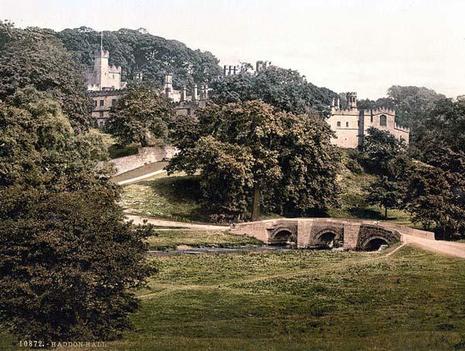 August 1972 - Haddon Hall, Derby, Derbyshire, England August 1972 - Haddon Hall, Derby, Derbyshire, England George was born on March 11, 1870, in Nottingham, Nottinghamshire, England, the eldest son of William and Charlotte Tinker Johnson, both age 30, after his older sisters Mildred Charlotte and Olive Brindley and before his brother William Francis. By March 19, 1872, George’s family had already moved a couple of times, relocating to the village of Quarndon, Derby, Derbyshire, England. On January 5, 1879, George's parents decided to baptize their children at the Cathedral of All Saints in Derby, when George was eight. By 1881, they are living at 35 Uttoxeter New Road in the Ecclesiastical Parish of St. Werburgh Church, Derbyshire, when George is 11. His father has gone from being a leather tanner to owning a shoe factory employing "20 hands + 3 boys". His family also employed a domestic servant, 19 year-old Ann Atkins from Newhall. On November 16, 1888, 18 year-old George embarked on his lifelong interest in seeing the world by becoming a British Merchant Marines apprentice aboard the Drumelton. An apprenticeship required a deposit of £10 – 20 or a premium of £40 to be paid through indentured servanthood. George chose indentured servanthood to the Liverpool shipowners, Gillison & Chadwick in London, England. (Perhaps his father wanted George to take over his shoe factory and therefor refused to pay for his apprenticeship training, as a sailing career was also not held in high esteem.) His apprenticeship contract was for four years with his wages garnished to pay the fee, while they provided George with food, living arrangements and clothing. According to his “List of Testimonials and Statement of Service at Sea”, George "deserted" (quit) the Drumelton on July 16, 1891. (During this time, numerous companies abused their apprentices with physical beatings utilizing hardwood bats.) On August 6, 1891, he becomes an “Able Seaman” aboard the iron ship, Benicia owned by Ismay, Imrie & Co. of the White Star Line, which carried goods and some passengers. From there he moves to the Culmore from March 10, 1892 till May 30, 1893. After the Culmore, he serves on two more ships before working on the Strathdon, from October 5, 1893 to June 25, 1894, of the Aberdeen White Star Lines traveling to and from London to Australia. By June 30, 1893, George applies for examination to become an officer listing the Fountain Hotel on West Street in Sheerness, County Kent, England as his permanent address. (His father William, owned the hotel employing a staff of 10, from an accountant to a barman, while his mother and sister, Mildred lived there as well.) George had spent 4 years, 10 months and 25 days at sea, when at the age of 24 he received his “Certificate of Competency” on July 19, 1894, number 028065, as a “Second Mate in the Merchant Service”, by the “Lords of the Committee of Privy Council For Trade”. As a Second Mate, charged with ship navigation and being emergency medical director on and off ship, George would have needed strong diplomatic and leadership skills in order to work well with and teach others. George’s “Certificate of Competency” is stolen. On his “Declaration of Lost Certificate”, he states it was, “last seen by me in New York, and it was stolen from my berth on board the ship when she was there about the 14th March, and tho’ I had made inquiries from the police authorities, I have been unable to recover the said certificate.” He is 27 and living at 1 Milk Street House, Milk Street, London, England in April of 1897. After paying 5 shillings, he receives his renewed and replacement “Certificate of Competency” number 031796 on June 3, 1897. Here is where our story had ended due to lost documents. According to his headstone, we knew he died on January 12, 1902. However, where? How? We contacted the County Recorder’s office of Contra Costa and applied for an informational copy of his death certificate. Unfortunately, no record was found. Over the years (as Counties transfer records from one system to another) record indexing becomes incomplete, leaving countless records unable to be located even though they still exist. The California Death Index currently only records deaths from 1905 on. Fortunately, we discovered the Merchant Marines kept their own member death records under “British Deaths at Sea, 1781 – 1968”. We found George listed as a Second Mate on the James Kerr, having sailed from Antwerp, Belgium to San Francisco, CA on November 15, 1901. He died in Port Costa, CA, on January 12, 1902 from an “Injury sustained by being knocked down (and run over) by moving train, when crossing railroad track.” This raised another question, why was he in Port Costa? The life of a seaman was not very glamorous and paid very little. According to the “Hearings Before the Merchant Marine Commission of 1904” to determine why Britain was losing most of its merchant sailors, it was found due to poor wages, hard work, and inability to support their families. Those that remained found temporary work during shore leave for extra income. Since they were idle from November through January, George probably found such work in Port Costa. We further found that George had the unique opportunity to serve under Captain Thomas Yardley Powles on the James Kerr. Captain Powles, along with his wife Jane (also a Second Mate) were known for treating all their men with curtesy, liberty and kindness and creating a family atmosphere. Mrs. Powles would have been George's "mom" on ship as she would "nurse the men when ill, help them when they were in trouble, and even darn their socks."
Four days later on January 16, 1902, the James Kerr left the port of San Francisco for Australia without their beloved second mate, George Homan Johnson whose desire was to see the world. Not having family in America, he was buried in Potter's Field because his family would have not have been notified in time to make other arrangements. Perhaps it was the kind and compassionate Captain Powles who commissioned such a nice headstone for him. Judie & Joseph Palmer are two of the founding members of the Martinez Cemetery Preservation Alliance (MCPA) and the Potter’s Field Project. Both have a passion for discovery, history, genealogy, anthropology and archaeology. For more info, please visit our website MartinezCemetery.org. Do you have a Potter’s Field story to tell? We welcome any pictures or information regarding the Alhambra Pioneer Cemetery or its Potter’s Field. Please email us at martinezcemetery@gmail.com or call us at (925) 316-6069. This Article was published in the Martinez News-Gazette on 5/31/2017 When we founded the Potter’s Field Restoration Project of the Alhambra Cemetery, it was due to 99% of its inhabitants not having an informational headstone to tell their story. The only evidence of their existence and final resting place are their cement markers we refer to as “Stones”. Their Stones are either numbered or blank and with the original County records incomplete or missing, it has caused those buried under them to become anonymous. Virginia Menezes-Costa is one of the approximate 1,700 residents marked by a Stone, whose story (thanks to her granddaughter Mary Leanos) can now finally be told.  Hart Island Hart Island The term Potter’s Field is of Biblical origin, referring to a ground where clay was dug for pottery, later bought by the high priests of Jerusalem for the burial of strangers, criminals and the poor. An online article by Kelsey Campbell-Dollaghan on New York’s largest Potter’s Field, Hart Island says it all, “...There are a few ways to end up on Hart Island. One third of its inhabitants are infants—some parents couldn’t afford a burial, others didn’t realize what a “city burial” meant when they checked it on the form. Many of the dead here were homeless, while others were simply unclaimed; if your body remains at the city morgue for more than a few weeks, you, too, will be sent for burial by a team of prisoners on Hart Island. These practices have given rise to dozens of cases where parents and families aren’t notified in time to claim the body of their loved one. It can take months (even years) to determine whether your missing mom, dad, sibling, or child ended up at Hart...” However, after much research, Alhambra Cemetery’s has some striking differences to a typical Potter’s Field. First, the County purchased the property in 1892, inheriting an unknown number of preexisting graves with headstones. Second, the County replaced 99% of its headstones with Stones (most likely in the 30’s). This means not all of our Potter’s Field residents were homeless, poor or unclaimed. Additionally, some were from foreign countries who died in the County Hospital and buried before their families received notification, while others as non-white were prevented from being buried anywhere else.  Mary Leanos Mary Leanos Last September, Mary emailed the Martinez Historical Society requesting help in locating her grandmother, Virginia Augusta Menezes-Costa’s grave. Mary had been looking for many years and stated, “I was about to give up until you called.” She also stated that, “My brother had visited her grave sometime in the early 70’s before he died and described its location as being in a cemetery full of small markers, abandoned, overgrown, and in disrepair located in Martinez.” With most of the County records lost (and Virginia not included on any of the Alhambra or St. Catherine’s Cemeteries Decedent Lists), this was not going to be an easy task. First, we found a Virginia M. Costa in the California Death Index listing her burial location as “07”, Contra Costa County. Next, Mary provided us with a copy of Virginia’s death certificate indicating she was 25½ yrs. old when she died at the County Hospital in Martinez. The undertaker listed was H. J. Curry who (according to the U.S. City Directory and California State Roster, 1899 Government and Military Records) was the County Coroner. With Mary’s brother’s description and this strong circumstantial evidence, we can safely assume that she is indeed buried in Potter’s Field.  Manuel Ferreira Costa, Virginia Augusta Menezes, Fall Creek, MA 1917 Manuel Ferreira Costa, Virginia Augusta Menezes, Fall Creek, MA 1917 Virginia Augusta Costa was born to Antonio Menezes and Josephine Augusta in Estreito da Calheta, Madère, Portugal on December 21, 1900. According to the Immigration Passenger List, of the White Star Line’s (Titanic Fame) SS Canopic, 16 year-old Virginia arrived in Boston Harbor on August 20, 1916 after sailing from Ilha de São Miguel, Portugal on August 14. Her destination was Lowell, MA to stay with “her brother” Manuel Ferreira Costa, (in reality her soon to be future husband). According to the Massachusetts Marriage Index of 1916 – 1920, they married in Fall River, MA in 1917. Mary stated her grandparents “were dressed rather nicely for their wedding picture which must have meant that my grandfather was working at that time and had the means to purchase nice clothing for the two of them.” While still living in Lowell, Massachusetts, Virginia and Manuel had three children, Mary Costa born June 15, 1920, Claude Ferreira Costa born August 15, 1921, and Anthony F. Costa born on December 21, 1922.  Anthony Costa, Virginia Costa, Anthony Costa Anthony Costa, Virginia Costa, Anthony Costa Virginia’s family migrated to California, in February of 1925. According to her death certificate, she’s listed as “Housewife” living in Crockett, CA. when she is admitted to the County Hospital on June 17, 1926 and dies June 18 at 11:30 pm from tuberculosis. She was buried June 21. We don’t know for sure the reason for her family’s move to California. However, we suspect that they came for the drier air, with the belief that it would help relieve her symptoms. Tuberculosis can be mistaken for allergies/asthma as it can take a year or more (when symptoms are present) to be fatal. We had the chance to meet Mary when she came to visit her grandmother during the 2016 October Cemetery Cleanup. Although Mary does not know where her grandmother’s exact burial plot is, she is very relieved to have found the location of the cemetery where she is buried. Thank you to Mary Leanos for letting us tell your grandmother’s story. Judie & Joseph Palmer are two of the founding members of the Martinez Cemetery Preservation Alliance (MCPA) and the Potter’s Field Project. Both have a passion for discovery, history, genealogy, anthropology and archaeology. For more info, please visit our website MartinezCemetery.org. Do you have a Potter’s Field story to tell? We welcome any pictures or information regarding the Alhambra Pioneer Cemetery or its Potter’s Field. Please email us at martinezcemetery@gmail.com or call us at (925) 316-6069. This Article was published in the Martinez News-Gazette on 5/17/2017 The Potter’s Field Restoration Project was in full swing last Saturday during the annual Alhambra Cemetery’s Spring Cleanup. Thanks to our hard working volunteers, much was accomplished. Beyond the usual clearing of debris, we leveled Nikolaos Glaros’s base in preparation for his headstone installation and cleaned Chinese-American Funerary Burner brick.  Martinez’s own Sean Dexter, renowned archaeologist and anthropologist from Country Condor Consulting, Inc., brought a screen for sifting soil. He checked for any artifacts or pieces of bone that could affect our work. To date nothing of note has been found. Christian Rousset, a retired CA builder, stonemason, cutter and sculptor, oversaw the work on the burner with Sean, which we wrote about in our last column. After apprenticing under a master artisan most of his youth, he spent the majority of his twenty’s traveling Europe restoring castles. Once we have finished cleaning its bricks, he will be overseeing rebuilding the burner. In future columns, we will be reporting our discoveries regarding its historic past and other findings. Amy Currie and Dawn Curren lent a hand in removing old mortar from the brick burner. Dawn, Chris, and we helped note and measure the burner before work began. Kathleen Koehlmoos and Mary Lou Johnson cleared fallen branches, debris, and some weeds from last winter. Both projects require a lot more work. Two articles ago we wrote about Nikolaos Glaros. Raymond Wallace took care of fixing his base by clearing it of weeds and debris before securing and leveling it. He also was able to level the headstone of another resident, Aaron Rice whom you will be reading about in future columns. Judie & Joseph Palmer are two of the founding members of the Martinez Cemetery Preservation Alliance (MCPA) and the Potter’s Field Project. Both have a passion for discovery, history, genealogy, anthropology and archaeology. For more info, please visit our website MartinezCemetery.org. Do you have a Potter’s Field story to tell? We welcome any pictures or information regarding the Alhambra Pioneer Cemetery or its Potter’s Field. Please email us at martinezcemetery@gmail.com or call us at (925) 316-6069.
|
AuthorsJudie & Joseph Palmer are two of the founding members of the Martinez Cemetery Preservation Alliance (MCPA) and the Potter’s Field Project. Both have a passion for discovery, history, genealogy, anthropology and archaeology. Archives
October 2021
Categories |








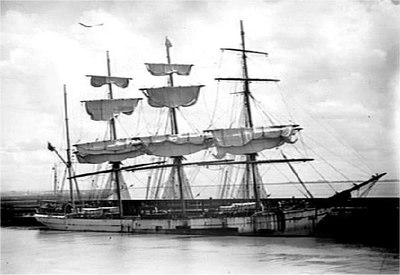
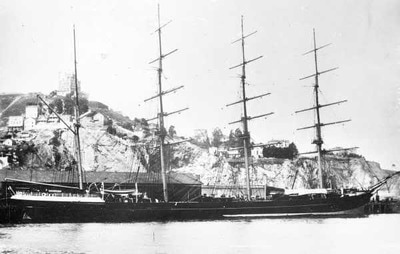
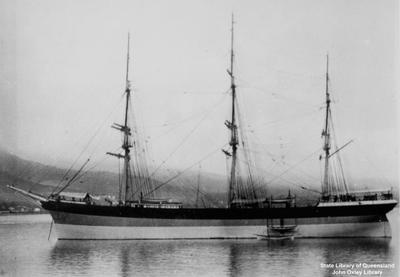







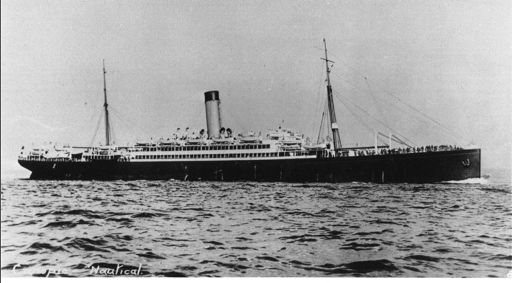





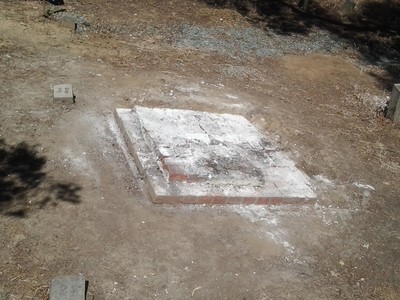



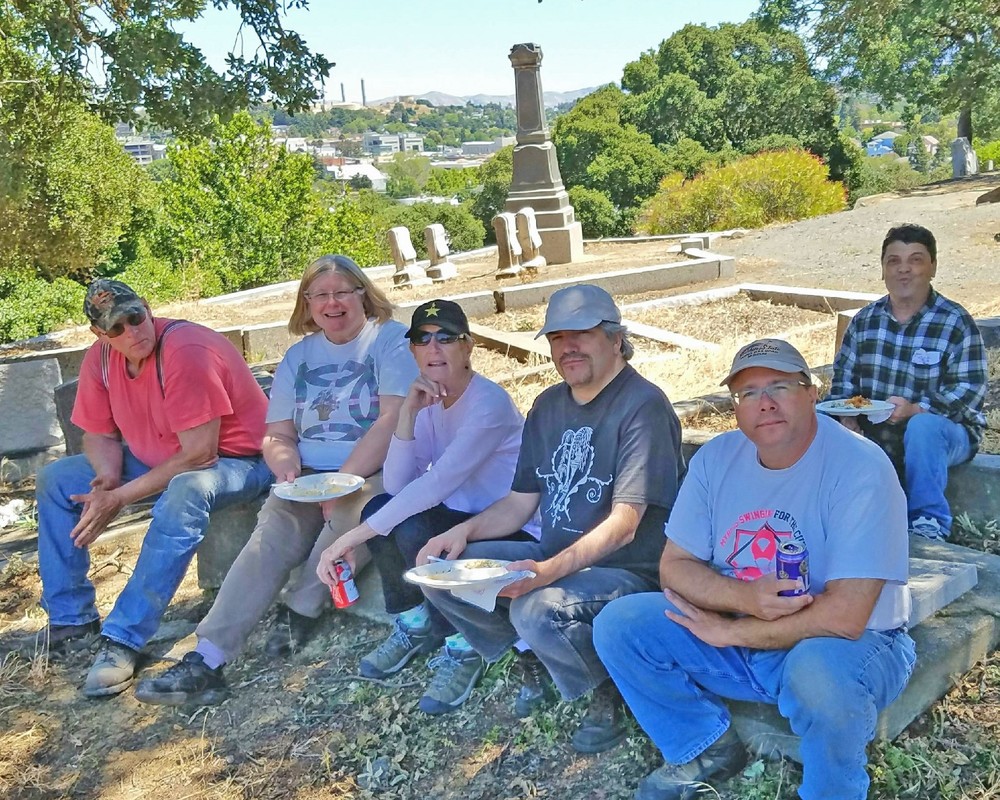
 RSS Feed
RSS Feed